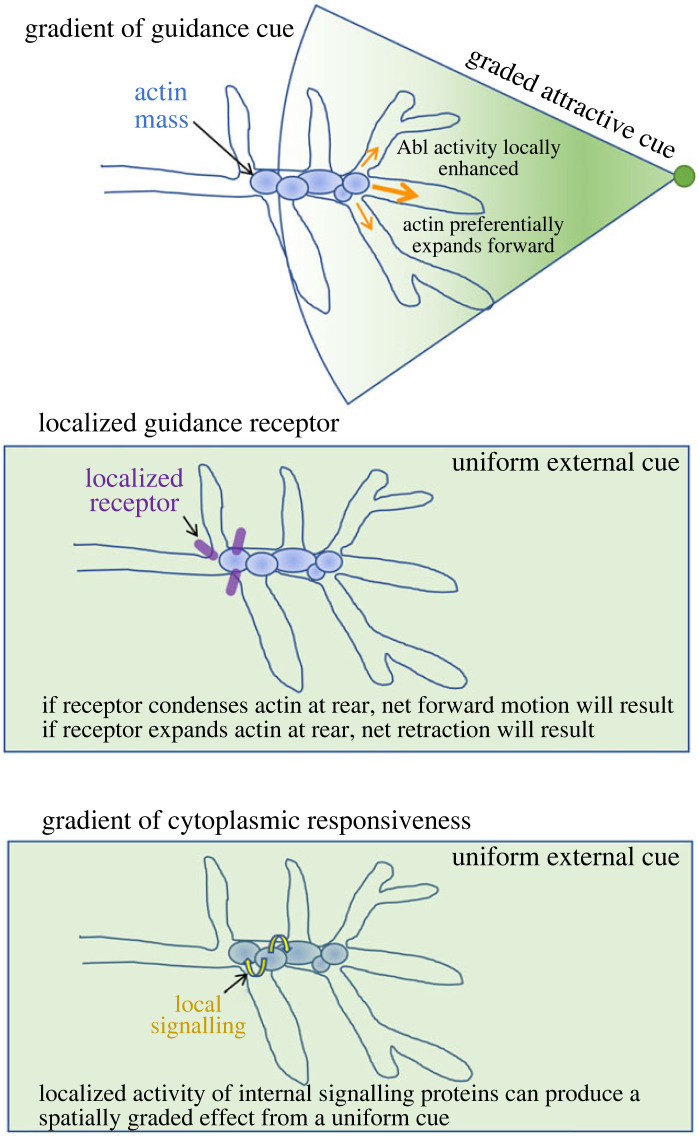Figure 7.
Speculative model for some of the ways that signalling might give rise to spatially graded actin expansion and condensation to promote axon growth and guidance. (a) Graded presentation of a guidance cue (depicted as a green shaded cone), whether diffusible or surface-bound, could, in principle, give rise to spatially graded activity of Arp2/3 and other actin regulatory factors to promote preferential actin expansion in the required direction (orange arrows). (b) Even in the presence of a uniform guidance cue (green box), localization of the cognate receptor (purple oblong) to just one end of the growth cone could preferentially promote expansion or condensation of actin at that end, thereby leading to net growth or net retraction of the axon, depending on the nature of the biochemistry. (c) Spatially inhomogeneous feedbacks in the cytoplasmic signalling network (yellow, curved arrows), localized distribution of cytoplasmic signalling proteins within the growth cone or local synthesis of key growth cone components could potentially evoke spatially localized outputs, and thus directed growth and guidance, even in the case of a uniform cue and uniformly localized receptor.

